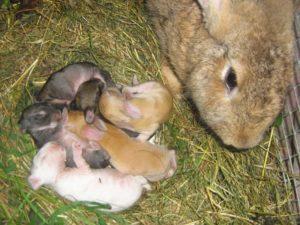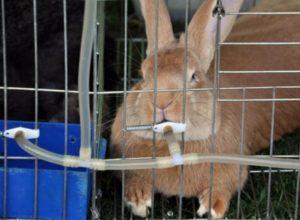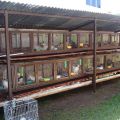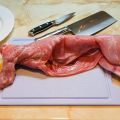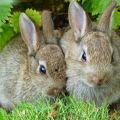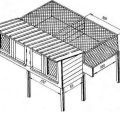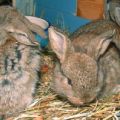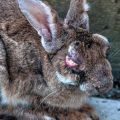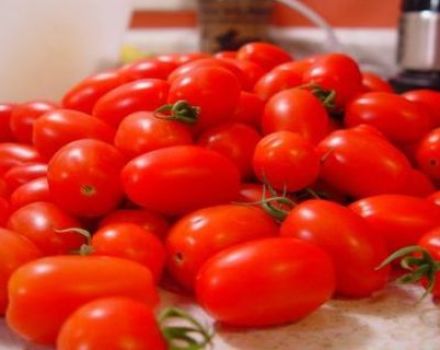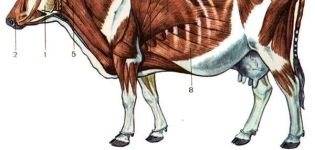Symptoms of coccidiosis in rabbits and treatment at home, prevention
Coccidiosis is an infectious disease caused by the simplest microorganisms - coccidia. The body of domestic rodents can infect 10 types of parasites localized in different organs. There are two forms of coccidiosis in rabbits, differing in symptoms - intestinal and hepatic. To save the livestock, treatment must be started immediately; medicines and folk recipes can be used as therapeutic agents.
What is coccidiosis in rabbits?
Coccidiosis is caused by a unicellular parasite of the Coccidia order of the Eimeria genus. Therefore, the second name of pathology is eimeriosis. These parasites are specific, settle only in the body of rodents, and are harmless to other farm animals. In the rabbit's body, they capture certain organs:
- coccidia living in the small intestine - Eimeria intestinalis, media, magma, calcicole;
- settling in the liver - Eimeria stiedae.
Outside the host's body, coccidia are in the form of cysts, that is, they have a shell that protects against temperature fluctuations and other negative environmental factors. Having penetrated the rabbit's body, the parasite loses its protective shell, begins to move along the digestive tract, and settles in a suitable organ.
How does the infection take place?
Transmission occurs from an infected rabbit to a healthy rabbit. The feces excreted by sick animals contain coccidial cysts. The feces pass the infection into feed and drinking water. A few days are enough for all individuals living in one cage to become infected.
Infection with coccidiosis is inevitable if:
- put a healthy individual in a cage with a patient;
- the pet will eat food contaminated with cysts or drink contaminated water;
- a farm worker will bring an infection on clothing or equipment after contact with sick individuals;
- a sick mother rabbit will feed the cubs with milk with parasites.

Most often, coccidiosis is detected in young individuals. This is due to the fact that rabbits up to 4 months of age switch from mother's milk to adult food, while their immune system is still weak.
There is a possibility of infection in rabbits if meadow grass is used as feed. It may contain traces of feces from wild mice containing coccidial cysts.
Symptoms of the disease
Symptoms of the hepatic and intestinal forms of pathology differ. However, in rabbits, both organs are often affected simultaneously.
Intestinal form
The period between infection and the manifestation of the first signs of coccidiosis is about 5 days. Intestinal coccidiosis symptoms:
- decreased appetite, refusal to eat;
- dehydration;
- tarnishing and disheveled coat;
- blanching of the mucous membranes;
- diarrhea green, later blood streaked.
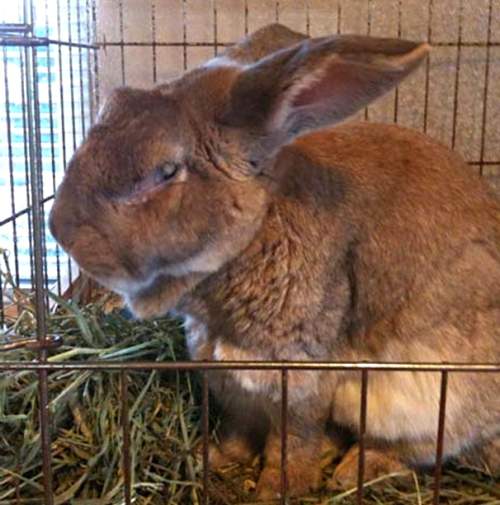
Before death, convulsions are observed, then the rabbit is paralyzed.
Hepatic form
Signs of hepatic coccidiosis:
- decreased appetite;
- insatiable thirst;
- apathetic, lethargic, drowsy state;
- the desire to hide in the far corner of the cage;
- swollen belly;
- stoop, tension due to unbearable pain.
Hepatic coccidiosis is acute and chronic. In the first case, about 10 days after infection, the rabbit begins to experience intense diarrhea. The animal falls into a coma, dies.
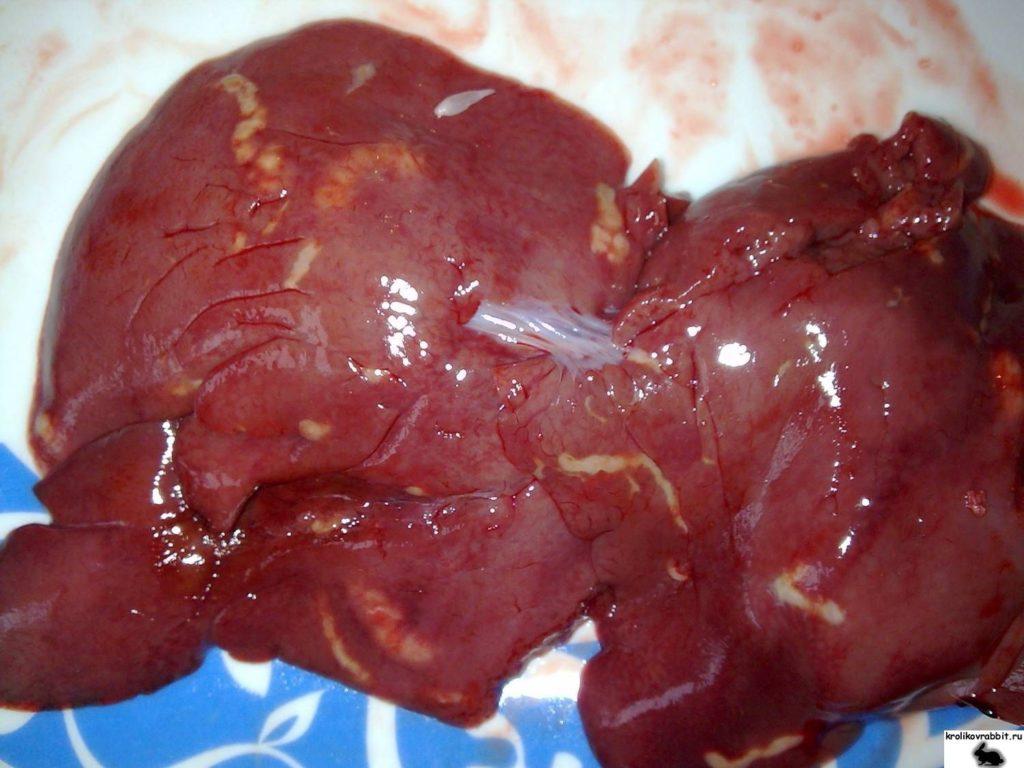
Diagnostic methods
To make a diagnosis, the observed symptoms are analyzed, a microscopic examination of feces is carried out, and the internal organs of dead animals are examined. The pathologist discovers in the dead rabbit white nodules in the tissues of the liver and intestines, ranging in diameter from poppy to cereal grains - these are accumulations of parasites. The material taken in the autopsy process is sent for microscopic examination. Coccidial cysts found under a microscope allow an accurate diagnosis.
How to treat coccidiosis in rabbits at home
If symptoms of coccidiosis are detected, it is impossible to delay treatment, otherwise the livestock will die.
The same medications should not be used to treat each new outbreak of infection, as coccidia gradually become resistant to the drug.
A new drug should be taken every 2 years.
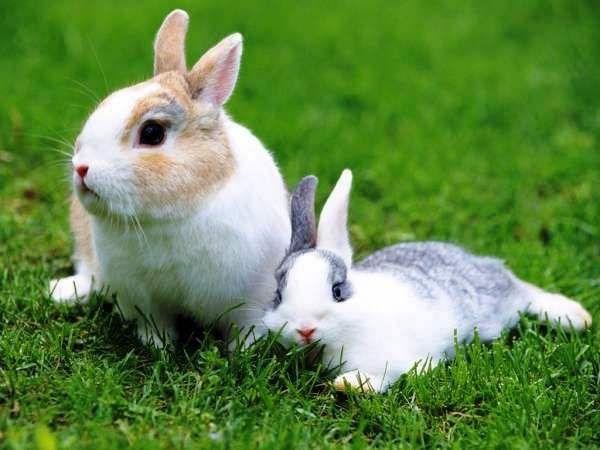
Medication
To destroy the infection in the body of rabbits, the following medicines are used to choose from:
- Eimeterm. It is realized in the form of 2.5 and 5% suspension. The active ingredient is toltrazuril (25 and 50 mg in 1 ml). The daily dose is 15 mg of toltrazuril per 1 kg of animal weight.
- Baycox. Treatment is carried out in the same way as with Eimeterm, since the active substance is similar. For 1 liter of water, take 5 ml of a 5% suspension (2.5% per 0.5 liter). The rabbit is given a solution, the daily dose is 300 ml. Medicines based on toltrazuril are given to the animal for 2 days, a 5-day pause is made, and then the dose is repeated.
- "Sulfadimethoxin". The drug is added to the food of rabbits. The dose for the first day is 0.2 g per 1 kg of the pet's weight, for the next 4 days - 0.1 g per 1 kg. The course of admission lasts 2 days, followed by a 5-day pause.
- "Furazolidone". The drug does not kill coccidia, but it is supplemented with a course to strengthen the physical condition of rabbits. The daily amount of funds is 30 mg per 1 kg of body weight. Reception lasts a week.
- "Phthalazol" + "Norsulfazole". The daily dose of the first drug is 0.1 g per 1 kg of body weight, the second is 0.3 g per 1 kg. Reception lasts 5 days, after a 5-day pause, the course is resumed.
Sick rabbits are given retinol (vitamin A) and B-group vitamins to quickly restore damaged organs and strengthen immunity.
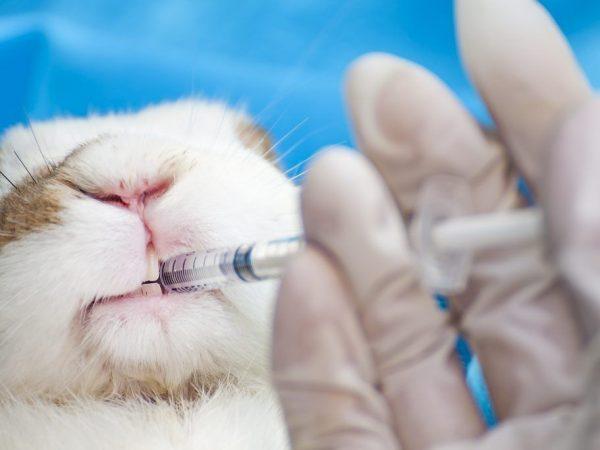
Folk remedies
Iodine is used as a folk remedy. In the rabbit's body, it oxidizes the products of protein breakdown, normalizes the thyroid gland, which has a positive effect on well-being. Both adults and young individuals are given iodine solution. For both therapeutic and prophylactic purposes, a 0.01% solution of the substance is used. For its preparation, 1 ml of 10% iodine concentrate (or 2 ml of 5%) is dissolved in 1 liter of water.
To prepare the solution, not metal dishes are used, but only glass or plastic ones, since iodine can react with metal to form undesirable substances.
In the first 10 days, young rabbits are given a 0.01% solution, the daily dose is 50 ml. Then they make a 5-day pause. After that, the concentration of the drug is increased: 70 ml of a 0.02% solution per day for a week. In the third week, 0.02% liquid is given in a volume of 100 ml per day.For adults, the dosage is different: in the first 10 days, 100 ml of a 0.01% solution per day. After a 5-day pause for 2 weeks, rabbits are given 200 ml of 0.02% liquid per day.
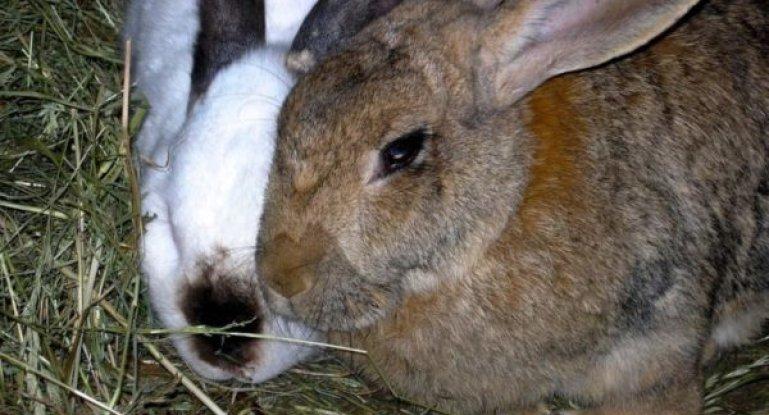
Why is the disease dangerous?
The spread of infection is rapid. It is enough to become infected with one rabbit, so that in a few days the whole livestock becomes ill with coccidiosis. The most dangerous for the livestock are individuals with a chronic form of the disease, which is observed with non-intensive invasion or re-infection. The number of parasites in the body is not enough to cause severe symptoms, but the sick animal remains a carrier of infection, releases it into the environment, infects its neighbors in the cage.
In the acute form of coccidiosis, the rabbit dies in 2 weeks. Signs of imminent death are convulsions and a nervous syndrome, manifested by throwing the head back.
But even if the rabbit survives, it remains a carrier of coccidia, dangerous to livestock. Therefore, individuals who have undergone coccidiosis are subject to immediate slaughter.
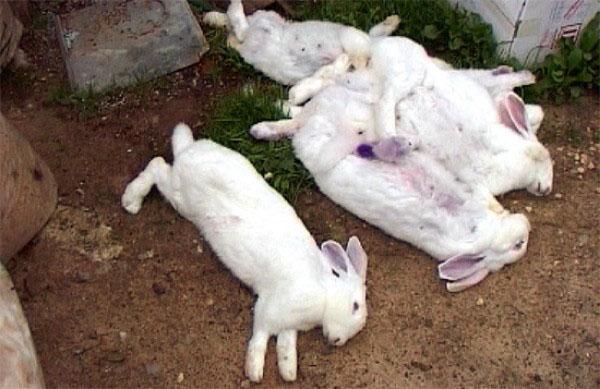
Prevention measures
To prevent the spread of coccidiosis, the following recommendations must be observed:
- clean and disinfect cells as they become dirty;
- avoid crowding rabbits, especially of different ages;
- feed animals with high-quality food, provide a balanced diet;
- change feed gradually;
- avoid high humidity, sudden temperature fluctuations and drafts;
- keep acquired rabbits in quarantine for a month.
Disinfection of cells and inventory must be thorough, as coccidial cysts are immune to common cleaning agents. Many farmers use blowtorch firing of cells. From strong disinfectants, a 2% solution of "Brovadez-plus" is suitable.
Can I eat the meat of a rabbit with coccidiosis?
Rabbit coccidiosis is not dangerous for humans. Meat can be eaten without fear, you just need to dispose of the affected internal organs. For coccidia, temperatures of 100 ° C are lethal, so after heat treatment, the meat becomes completely harmless. However, many people, having seen enough sick rabbits, disdain to eat meat, throw it away.
Sick rabbit skins will have to be thrown away In an infected animal, the fur becomes dull and crumpled, it is useless to use it in furrier business.
